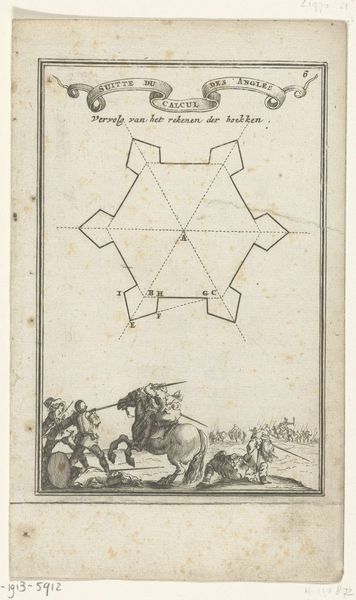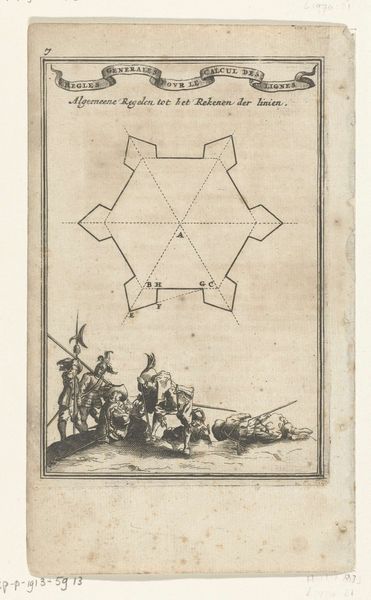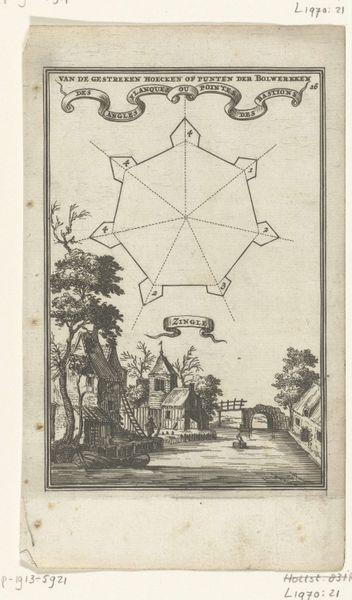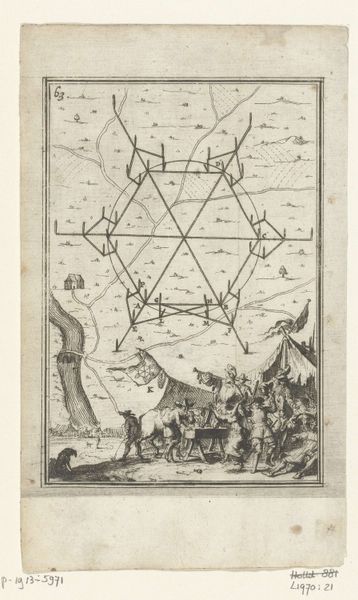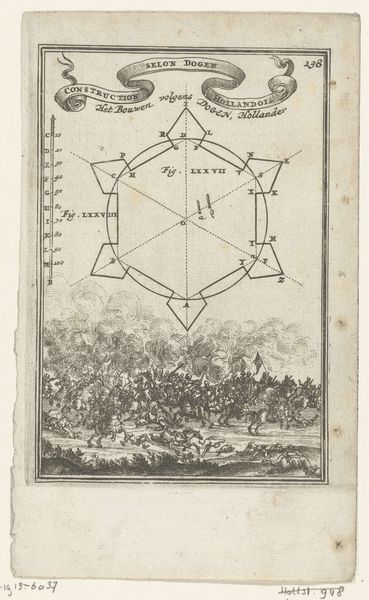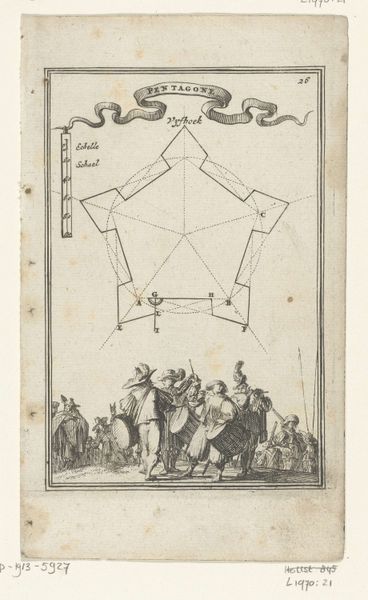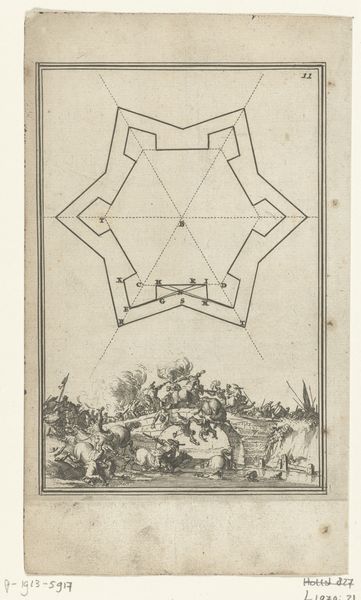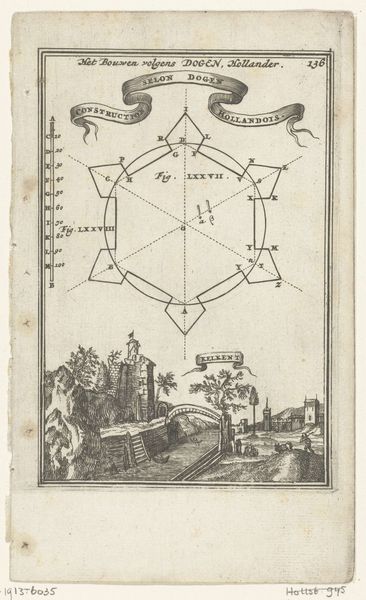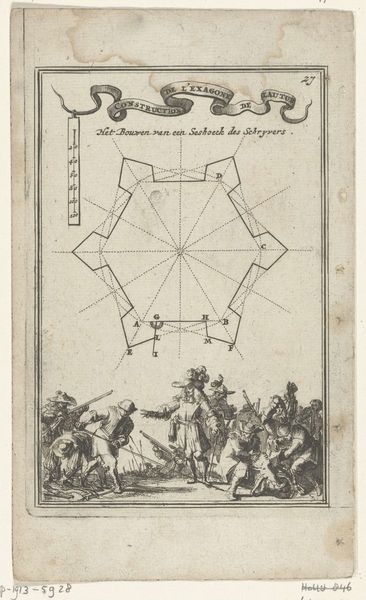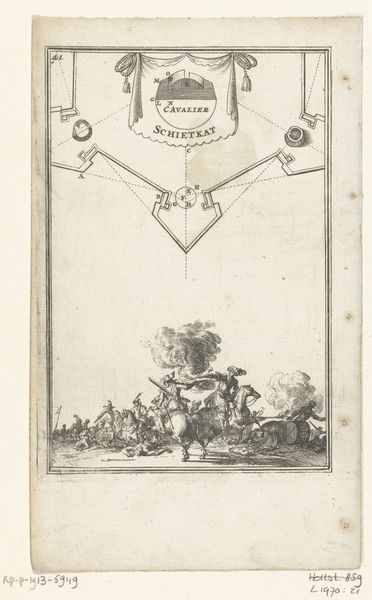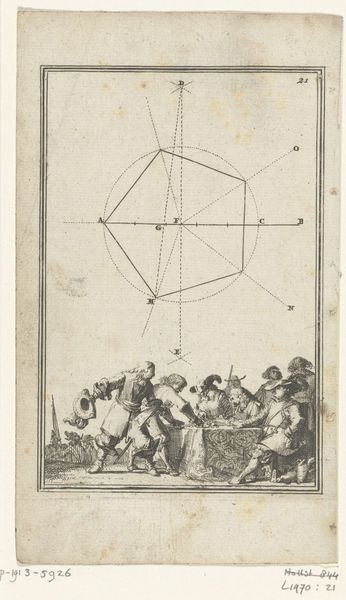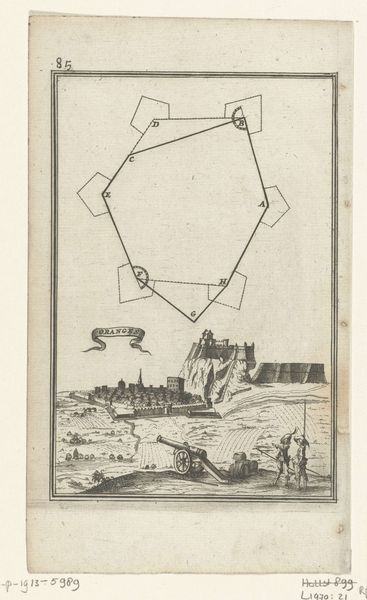
Illustratie voor 'Den Arbeid van Mars' van Allain Manesson Mallet 1672
0:00
0:00
drawing, print, engraving
#
drawing
#
medieval
# print
#
landscape
#
geometric
#
line
#
engraving
Dimensions: height 186 mm, width 112 mm
Copyright: Rijks Museum: Open Domain
Curator: This is a fascinating piece! It’s an illustration by Romeyn de Hooghe from 1672, titled “Illustratie voor 'Den Arbeid van Mars' van Allain Manesson Mallet.” Editor: My eyes are drawn to the geometric shape at the top...it looks like a blueprint or design! What's going on with that stark contrast between that hard geometry and the scene beneath it? Curator: Yes, the upper portion features a detailed geometric figure, something straight out of Euclid. Beneath that we see an intricately rendered landscape with buildings and a body of water. The artwork seems to be combining pure abstraction with representational naturalism. Editor: I'm compelled by that interplay! It feels like two worlds coexisting on the same plane, with that angular construction almost weighing down the scene beneath. I wonder, is the natural setting real, or is it more representational, an "idea" of a landscape rather than one that actually exists? Curator: The setting is absolutely representational—stylized, even. Think about the date—1672—and remember, the Baroque period embraced symbolism and complex layers of meaning. The geometric shape probably served as an important framework for the themes in Allain Manesson Mallet’s "Den Arbeid van Mars." Editor: So the shape serves as a grounding and gives a plan, structure, even a sort of constraint for the freedom beneath? Does the scene represent a potential creation, brought into being through this...geometry? Curator: You’ve nailed it. Think about what was valued in that time: reason, order, control—especially in a book dealing with the labors of Mars, the god of war! This is about imposing order on the world, be it through architecture or, perhaps metaphorically, through strategy and calculated designs. Editor: I am taken with this drawing’s precision of line; even after all these centuries the contrast seems razor sharp! Curator: Indeed. And what appears at first to be a rigid combination actually allows us, I think, to reflect on what structure and intention allows when turned toward nature, art and culture. Editor: What a surprisingly rich work. A dialogue of control and abandon.
Comments
No comments
Be the first to comment and join the conversation on the ultimate creative platform.
